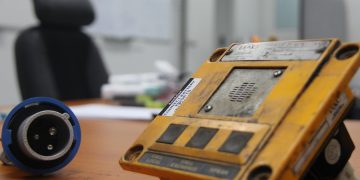The 15-Second Trick For Roar Solutions
The 15-Second Trick For Roar Solutions
Blog Article
Things about Roar Solutions
Table of ContentsGetting The Roar Solutions To WorkAn Unbiased View of Roar SolutionsThe 5-Minute Rule for Roar Solutions
In order to safeguard installations from a potential explosion a technique of evaluating and classifying a possibly unsafe area is needed. The function of this is to ensure the correct choice and setup of tools to inevitably stop a surge and to guarantee safety of life.
(https://profiles.delphiforums.com/n/pfx/profile.aspx?webtag=dfpprofile000&userId=1891249800)
No tools needs to be mounted where the surface temperature of the devices is higher than the ignition temperature level of the offered threat. Below are some usual dirt unsafe and their minimal ignition temperature level. Coal Dirt 380C 225C Polythene 420C (melts) Methyl Cellulose 420C 320C Starch 460C 435C Flour 490C 340C Sugar 490C 460C Grain Dust 510C 300C Phenolic Resin 530C > 450C Aluminium 590C > 450C PVC 700C > 450C Soot 810C 570C The likelihood of the threat being present in a concentration high enough to create an ignition will differ from place to area.
In order to identify this threat an installment is separated right into areas of risk depending upon the quantity of time the harmful is existing. These locations are referred to as Zones. For gases and vapours and dirts and fibres there are three areas. Zone 0 Zone 20 A dangerous environment is highly likely to be existing and may exist for extended periods of time (> 1000 hours per year) or even continuously Area 1 Area 21 A hazardous atmosphere is feasible however unlikely to be present for extended periods of time (> 10 450 C [842 F] A category of T6 suggests the minimum ignition temperature level is > 85 C [185 F] Dangerous location electrical devices perhaps developed for usage in higher ambient temperatures. This would certainly indicated on the score plate e.g. EExe II C T3 Ta + 60C( This indicates at 60C ambient T3 will not be exceeded) T1 T1, T2, T3, T4, T5, T6 T2 T2, T3, T4, T5, T6 T3 T3, T4, T5, T6 T4 T4, T5, T6 T5 T5, T6 T6 T6 A T Course rating of T1 suggests the optimum surface area temperature produced by the tool at 40 C is 450 C. Presuming the associated T Class and Temperature rating for the devices are suitable for the location, you can constantly make use of a tool with a much more strict Division score than needed for the location. There isn't a clear answer to this concern. It actually does depend on the kind of tools and what repair work require to be brought out. Devices with specific test treatments that can't be carried out in the field in order to achieve/maintain 3rd party score. Have to return to the manufacturing facility if it is before the tools's solution. Field Repair Service By Authorised Employee: Complicated screening might not be called for nonetheless particular procedures may require to be adhered to in order for the equipment to keep its 3rd party score. Authorised workers must be used to carry out the work properly Repair work should be a like for like substitute. New part have to be thought about as a direct replacement calling for no special screening of the tools after the repair is full. Each item of tools with a dangerous score ought to be assessed individually. These are laid out at a high degree listed below, but also for even more in-depth information, please refer directly to the standards.
What Does Roar Solutions Mean?
The tools register is a detailed database of devices records that includes a minimum collection of areas to identify each thing's area, technological specifications, Ex-spouse category, age, and environmental data. The proportion of Comprehensive to Shut examinations will be established by the Tools Danger, which is examined based on ignition threat (the probability of a source of ignition versus the chance of a flammable atmosphere )and the dangerous area classification
( Zone 0Area 1, or 2). Applying a durable Risk-Based Inspection( RBI )strategy is crucial for making certain compliance and safety and security in taking care of Electrical Tools in Hazardous Locations( EEHA).
Roar Solutions Can Be Fun For Anyone

In terms of explosive threat, an unsafe location is an environment in which an eruptive ambience is present (or might be expected to be existing) in quantities that need special preventative measures for the building, installment and use tools. hazardous area course. In this short article we explore the difficulties faced in the work environment, the risk control actions, and the required proficiencies to function safely
It issues of contemporary life that we produce, store or manage a variety of gases or liquids that are considered important link combustible, and a variety of dusts that are regarded combustible. These compounds can, in particular problems, form eruptive environments and these can have significant and heartbreaking consequences. The majority of us are familiar with the fire triangular get rid of any type of among the 3 elements and the fire can not happen, yet what does this mean in the context of hazardous locations? When damaging this down into its easiest terms it is essentially: a combination of a specific quantity of release or leak of a specific material or product, blending with ambient oxygen, and the presence of a source of ignition.
In a lot of circumstances, we can do little regarding the levels of oxygen airborne, however we can have significant impact on resources of ignition, for example electrical tools. Unsafe areas are documented on the hazardous location category illustration and are identified on-site by the triangular "EX LOVER" indication. Right here, amongst various other vital details, areas are split right into 3 kinds depending on the risk, the possibility and duration that an eruptive ambience will certainly exist; Zone 0 or 20 is considered the most harmful and Area 2 or 22 is considered the least.
Report this page